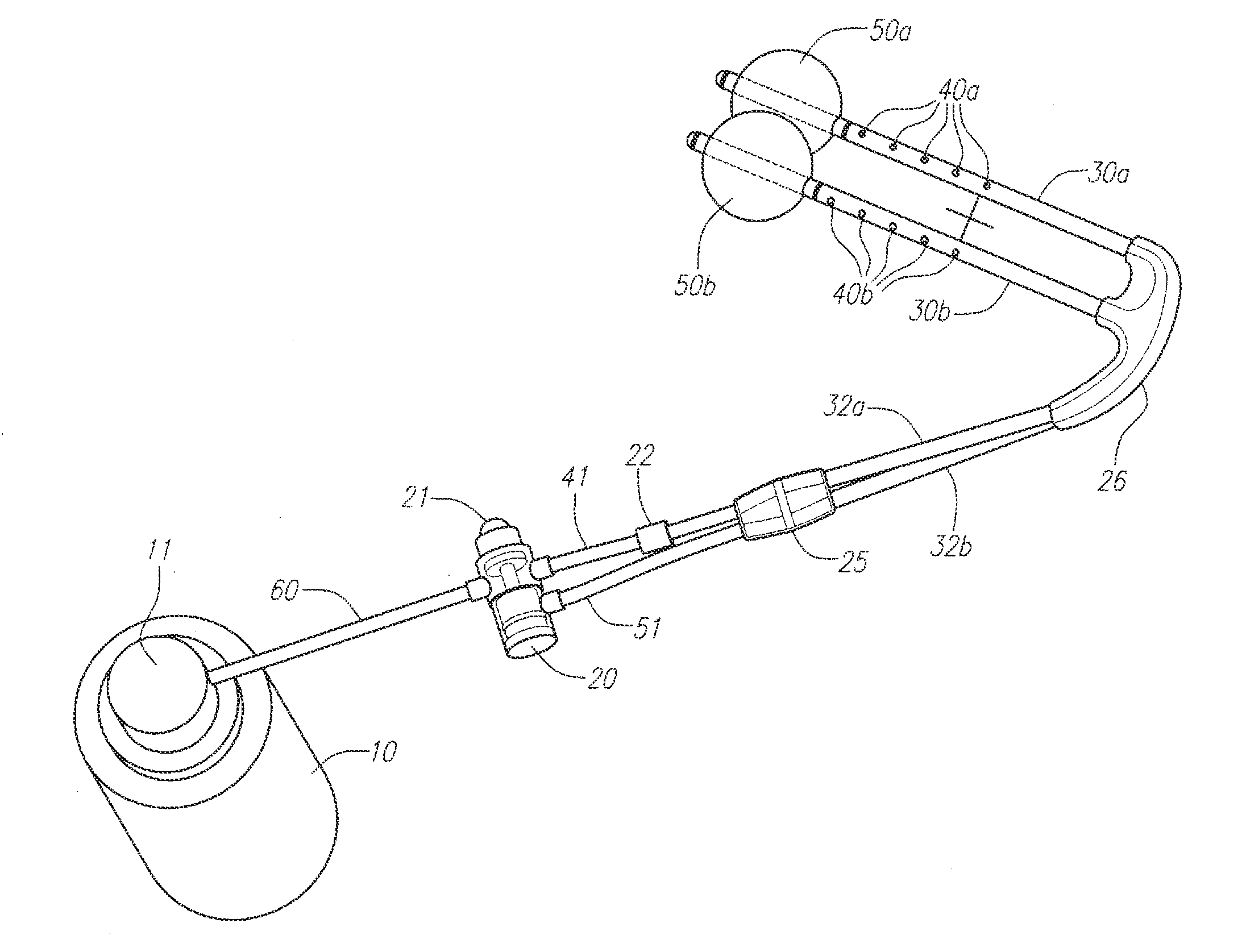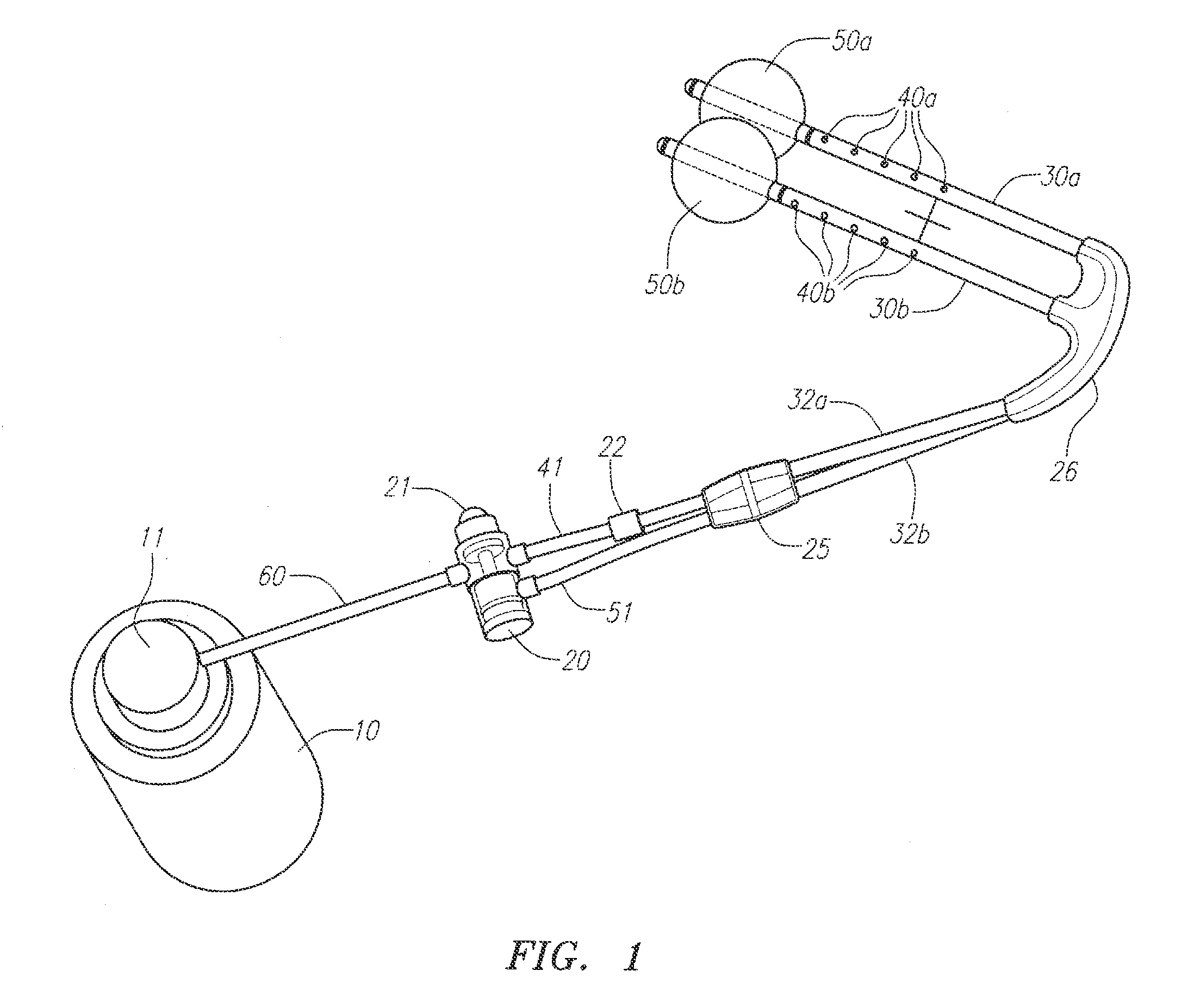Devices for cooling the nasal cavity
- Summary
- Abstract
- Description
- Claims
- Application Information
AI Technical Summary
Benefits of technology
Problems solved by technology
Method used
Image
Examples
Embodiment Construction
[0027]Described herein are devices and methods for delivering, from a pressurized source, a fluid that evaporates in the nasal cavity to provide cerebral and or systemic cooling. The approach is a self contained methodology which is designed for emergent care at the site of the injury. Essentially, this process provides a device and method for rapidly administering therapeutic hypothermia in an out-of-hospital setting, such as by emergency or ambulance personnel by developing an endothermic reaction within the nasal pharyngeal space, a mini-internal refrigeration unit. This approach eliminates the need for external refrigeration units, and large ventilation units which are not portable.
[0028]The device includes at least one nasal catheter in fluid communication with a pressurized fluid source for delivering a liquid spray of the fluid, which has a boiling point equal to or less than body temperature. In some embodiments, the device includes two nasal catheters such that one nasal ca...
PUM
| Property | Measurement | Unit |
|---|---|---|
| Boiling point | aaaaa | aaaaa |
| Boiling point | aaaaa | aaaaa |
| Pressure | aaaaa | aaaaa |
Abstract
Description
Claims
Application Information
 Login to View More
Login to View More - R&D
- Intellectual Property
- Life Sciences
- Materials
- Tech Scout
- Unparalleled Data Quality
- Higher Quality Content
- 60% Fewer Hallucinations
Browse by: Latest US Patents, China's latest patents, Technical Efficacy Thesaurus, Application Domain, Technology Topic, Popular Technical Reports.
© 2025 PatSnap. All rights reserved.Legal|Privacy policy|Modern Slavery Act Transparency Statement|Sitemap|About US| Contact US: help@patsnap.com



